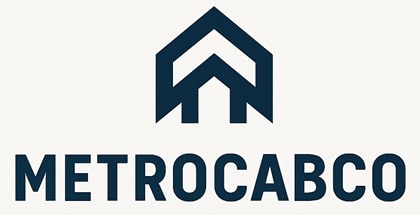Topical clustering has transcended its original purpose of enhancing SEO for Google. It now serves as a thorough strategy to improve content organization and user engagement. By grouping related content under central themes, marketers can create interconnected articles that enhance navigation and satisfaction. This approach establishes authority and encourages exploration, ultimately increasing traffic. For those seeking to harness the full potential of topical clustering, there are deeper insights and strategies to explore.
Key Takeaways
- Topical clustering enhances user experience by organizing content, making it easier for visitors to find related information across various platforms, not just Google.
- Social media algorithms are increasingly favoring structured content, making topical clustering valuable for improving visibility on these platforms.
- Voice search and conversational AI require content to be organized thematically, making topical clustering essential for adapting to emerging technologies.
- Enhanced internal linking from topical clusters improves navigation and engagement, benefiting not only SEO but also user retention across diverse content channels.
- Personalization in content delivery relies on cohesive topical structures, allowing brands to tailor their messaging to individual audience preferences beyond search engines.
Understanding Topical Clustering
Topical clustering, as a method of organizing content, enhances the way information is structured and accessed. This approach involves grouping related content under a central theme, creating a web of interconnected articles that provide a thorough understanding of a subject.
By organizing topics hierarchically, it allows for easier navigation and retrieval of information. Each cluster typically includes a pillar content piece that serves as a detailed guide, supported by various subtopics that explore specific aspects.
Also Read
This structure not only aids readers in finding relevant information quickly but also reinforces the subject’s authority. Additionally, topical clustering aligns with search engine algorithms, improving visibility and engagement, as it presents a well-rounded perspective on topics that users are actively seeking.
The Benefits of Topical Clustering for Content Creators
Content creators can greatly benefit from implementing topical clustering in their strategies. By organizing content around central themes, creators can enhance their overall effectiveness and visibility. This approach not only streamlines content creation but also boosts SEO performance, making it easier for audiences to discover related materials.
- Improved SEO: Clustering content around specific topics helps search engines understand relevance and context.
- Streamlined Content Creation: Content creators can plan and produce related articles more efficiently.
- Enhanced Authority: A well-structured topical cluster establishes creators as experts in their fields.
- Increased Traffic: Related content encourages visitors to explore more articles, increasing site engagement and retention.
Implementing topical clustering can consequently lead to greater success for content creators.
How Topical Clustering Enhances User Engagement
Topical clustering markedly improves content navigation, allowing users to easily find related information.
This structured approach encourages users to explore more content, leading to increased time spent on the site.
As a result, user engagement is enhanced, providing a more satisfying experience.
Improved Content Navigation
When users encounter a well-structured website, they are more likely to explore and engage with the material presented. Topical clustering enhances content navigation, guiding users seamlessly through related topics. This organization allows visitors to find information quickly, improving their overall experience.
Benefits of improved content navigation include:
- Clear pathways: Users can easily follow links to related content, ensuring they find what they need.
- Enhanced understanding: Grouping similar topics fosters deeper comprehension of complex subjects.
- Reduced frustration: A logical structure minimizes the chances of users feeling lost or overwhelmed.
- Increased satisfaction: Engaging navigation encourages users to spend more time exploring various aspects of a topic.
Ultimately, improved content navigation leads to higher user engagement and satisfaction.
Increased Time on Site
By organizing information into cohesive clusters, websites can greatly increase the time users spend on site. This approach allows visitors to easily navigate related topics, encouraging deeper exploration of content.
When users find interconnected articles, they are more likely to engage with additional resources, leading to longer session durations. Topical clustering effectively meets user intent by providing thorough insights on specific subjects, enhancing satisfaction and retention.
As users explore into a well-structured content ecosystem, they are less likely to disengage or leave the site, resulting in lower bounce rates. Additionally, this method fosters a sense of discovery, making it easier for users to uncover valuable information that aligns with their interests, ultimately improving overall user engagement and site performance.
Implementing a Topical Clustering Strategy
Implementing a topical clustering strategy requires a systematic approach to content organization that enhances both user experience and search engine optimization.
This method involves grouping related content around a central theme, improving navigation and relevance. The following steps can facilitate the effective implementation of a topical clustering strategy:
- Identify Core Topics: Determine primary subjects relevant to the target audience.
- Create Pillar Content: Develop thorough, in-depth articles that serve as the foundation for each cluster.
- Develop Supporting Content: Write additional articles that link back to the pillar, providing valuable insights on related subtopics.
- Optimize Internal Linking: Ascertain that all content is interlinked to enhance discoverability and establish topical authority.
This structured approach can greatly improve content discoverability and user engagement.
Measuring the Success of Your Topical Clusters
Measuring the success of topical clusters is essential for understanding their impact on both user engagement and search engine performance. Key performance indicators (KPIs) such as organic traffic, bounce rate, and average session duration provide insights into how well the clusters are performing. By analyzing these metrics, marketers can identify strengths and weaknesses within their content strategy.
| KPI | Target Value | Current Value |
|---|---|---|
| Organic Traffic | 10,000+ | 8,500 |
| Bounce Rate | <40% | 35% |
| Average Session Duration | >2 mins | 1.5 mins |
This data helps in refining the approach to topical clustering, ensuring better alignment with audience interests and improved visibility in search engine results.
Common Mistakes to Avoid in Topical Clustering
In the domain of topical clustering, several common pitfalls can hinder effectiveness.
Failing to conduct thorough keyword research, overcomplicating content structures, and neglecting internal linking are mistakes often encountered.
Recognizing and addressing these issues is essential for optimizing a topical clustering strategy.
Ignoring Keyword Research
Neglecting keyword research can greatly undermine the effectiveness of topical clustering strategies. Without a thorough understanding of the keywords relevant to the target audience, content creators risk developing clusters that lack focus and fail to attract organic traffic.
This oversight can lead to several pitfalls:
- Irrelevant Topics: Clusters may center around subjects that do not resonate with audience interests.
- Poor User Engagement: Content might not meet user intent, resulting in high bounce rates.
- Ineffective SEO: Without optimizing for the right keywords, visibility in search engines diminishes.
- Wasted Resources: Time and effort are expended on content that does not perform well.
Incorporating keyword research is essential for creating effective topical clusters that drive traffic and engagement.
Overcomplicating Content Structure
Overcomplicating content structure can derail the effectiveness of topical clustering. When content creators introduce unnecessary layers or complex hierarchies, it can confuse both users and search engines. A clear, logical structure is essential for guiding readers through related topics and enhancing their understanding.
Overly intricate setups may lead to disjointed content that fails to establish meaningful connections among articles. Additionally, excessive categorization can dilute the focus of each piece, causing key information to be lost among irrelevant details.
To maximize the benefits of topical clustering, creators should prioritize simplicity and coherence, ensuring that each piece of content serves a specific purpose within the broader topic. This approach fosters a more intuitive user experience and strengthens overall content strategy.
Neglecting Internal Linking
Internal linking plays an essential role in the effectiveness of topical clustering, yet many content creators overlook its significance. Neglecting internal links can lead to a fragmented website structure, making it difficult for users and search engines to navigate content efficiently.
This oversight can diminish the overall SEO potential of a site, ultimately affecting its visibility.
Common mistakes include:
- Failing to connect related articles, which reduces topic relevance.
- Using generic anchor text instead of descriptive links, limiting context.
- Ignoring the importance of link placement within content, which can confuse readers.
- Not updating internal links after content revisions, resulting in broken pathways.
Future Trends in Topical Clustering and Content Marketing
As the digital landscape evolves, the future of topical clustering and content marketing is poised to undergo significant transformations. Increasingly sophisticated algorithms are pushing marketers to prioritize quality over quantity, emphasizing the importance of cohesive content silos.
Future trends suggest a shift towards personalization, where content is tailored to individual user preferences, enhancing engagement and retention. Additionally, advancements in artificial intelligence will facilitate deeper analysis of audience behavior, allowing for more targeted clustering strategies.
Voice search and conversational AI are also expected to influence content structure, prompting marketers to adapt their strategies accordingly. Ultimately, the integration of emerging technologies will redefine how topical clustering is approached, making it an essential component of effective content marketing in the years to come.
FAQ
Can Topical Clustering Improve SEO for Smaller Websites?
Topical clustering can enhance SEO for smaller websites by organizing content around specific themes, improving relevance and user experience. This strategy helps search engines better understand the site’s focus, potentially increasing visibility and traffic over time.
How Often Should Topical Clusters Be Updated?
Research indicates that 65% of high-ranking content is regularly updated. To maintain relevance and optimize performance, topical clusters should be refreshed every six to twelve months, ensuring content aligns with evolving trends and audience interests.
Is Topical Clustering Suitable for All Industries?
Topical clustering can be beneficial across various industries, but its effectiveness depends on the specific audience and content needs. Industries with diverse topics may find it particularly advantageous for organizing information and improving searchability.
What Tools Can Assist With Topical Clustering?
Various tools assist in topical clustering, such as Ahrefs, which helps marketers analyze content gaps. For instance, a travel agency utilized it to create themed articles, greatly boosting their organic traffic and audience engagement.
How Does Topical Clustering Affect Social Media Strategy?
Topical clustering enhances social media strategy by organizing content around specific themes, improving audience engagement. It allows brands to establish authority, streamline messaging, and increase visibility, ultimately fostering stronger connections with their target audience.
Conclusion
To summarize, topical clustering has emerged as a pivotal strategy for content creators seeking to enhance visibility and engagement. By organizing content around central themes, creators can not only streamline their efforts but also foster deeper connections with their audience. As the digital landscape evolves, embracing this approach can help marketers stay ahead of the curve. Ultimately, those who put all their eggs in the topical clustering basket are likely to reap significant rewards in the ever-competitive online arena.













